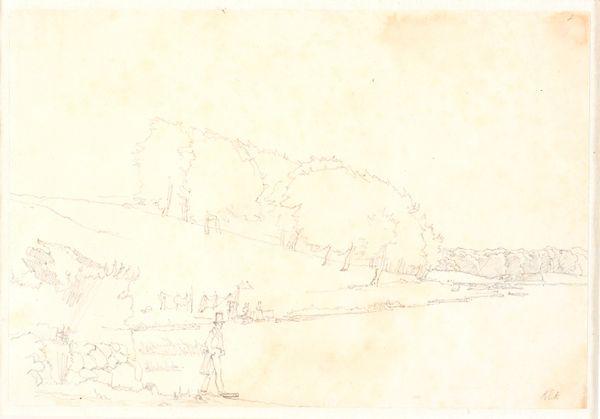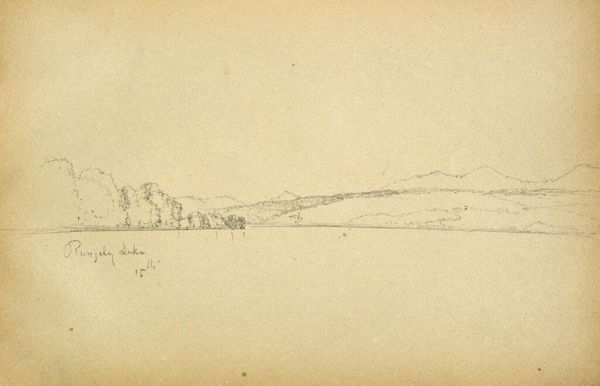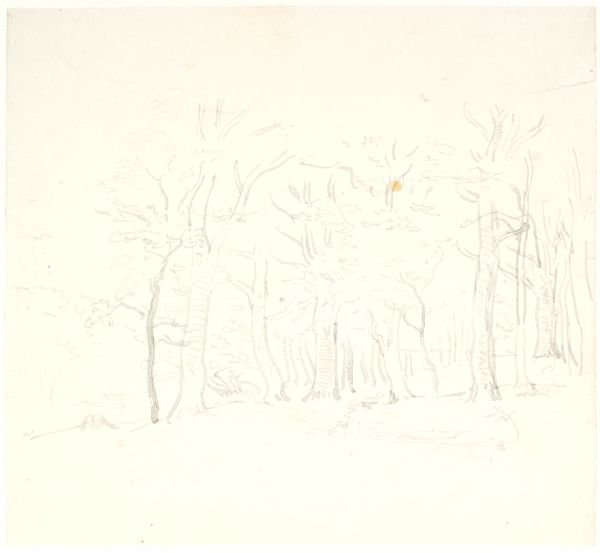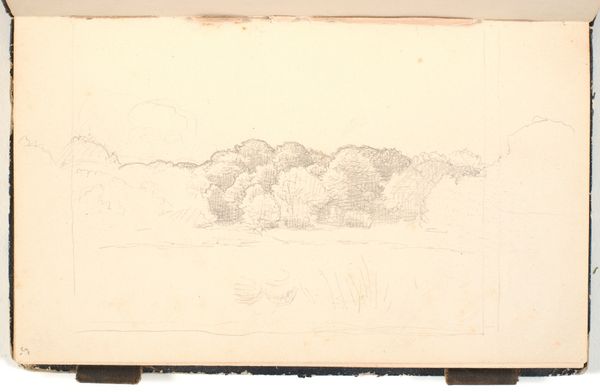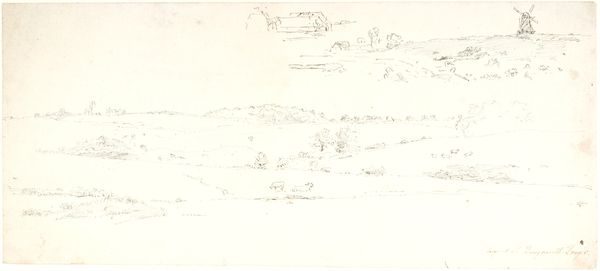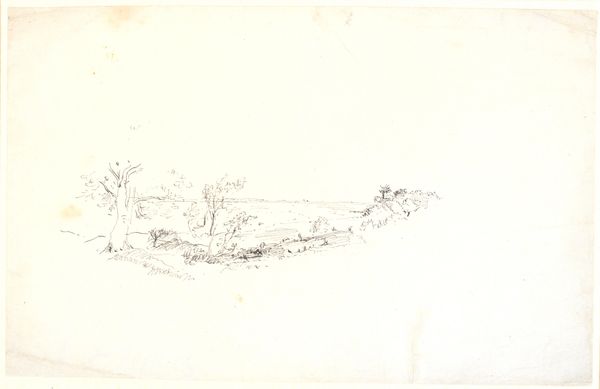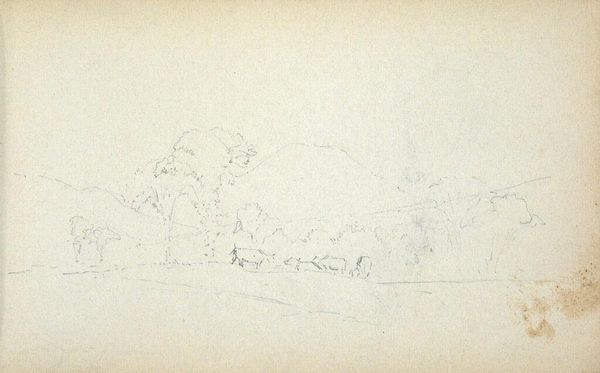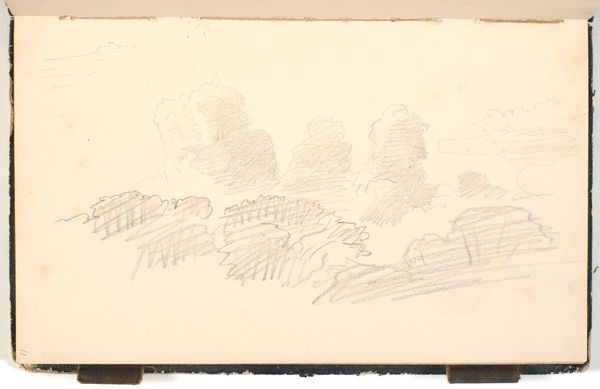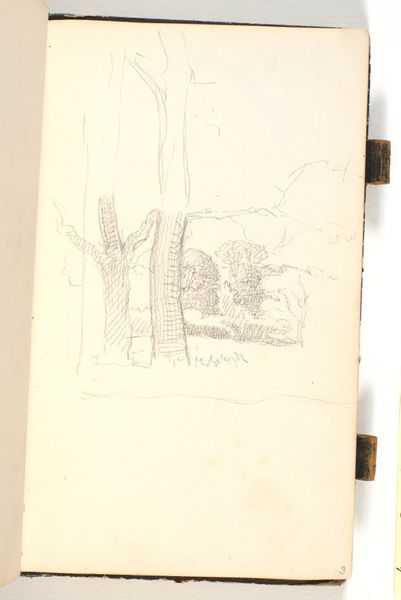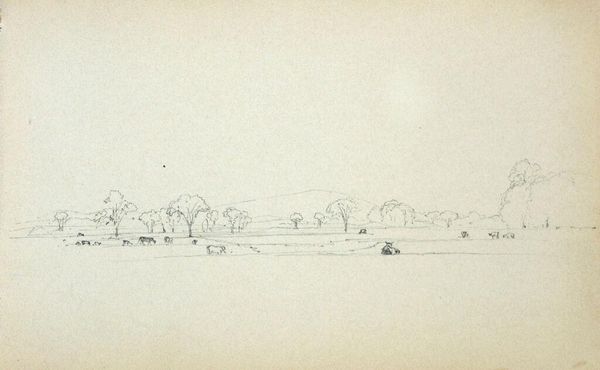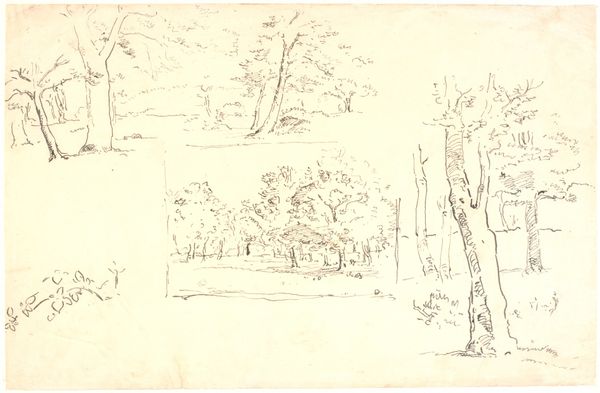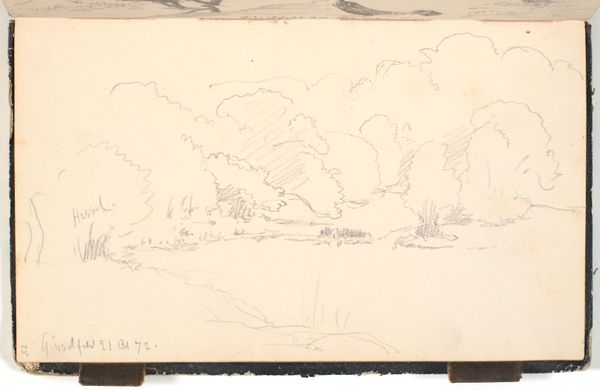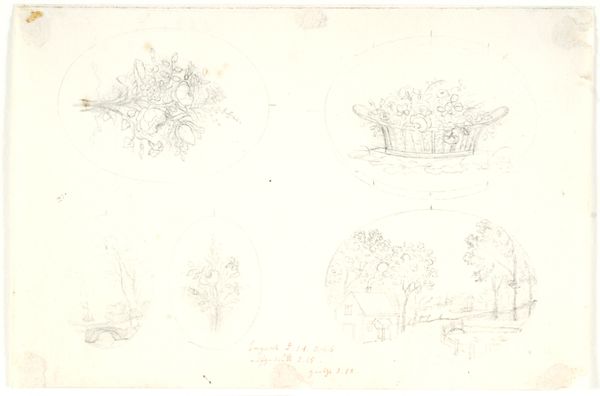
drawing, pencil
#
drawing
#
landscape
#
pencil
#
realism
Dimensions: 215 mm (height) x 130 mm (width) (bladmaal)
Curator: Here we have P.C. Skovgaard's 1872 pencil drawing, "Et skovbryn, i forgrunden en flad mark," which translates to "A forest edge, in the foreground a flat field," now residing at the SMK, the National Gallery of Denmark. Editor: It has a quiet melancholy about it, doesn't it? The almost ghostly quality of the pencil on paper, with a composition that feels deliberately subdued. Curator: Indeed. Skovgaard, as a central figure in the Danish Golden Age, was deeply invested in representing the Danish landscape as a carrier of national identity. But here, the starkness departs from that more celebratory tradition. Editor: The simplicity is striking. Almost a deliberate rejection of grandeur, focusing instead on the mundane, everyday. Do you see a parallel with the political mood then? Denmark had just suffered heavy losses in the war. Curator: Absolutely. There's a definite shift occurring within Danish art and society at this point. The heroic narratives were faltering, which encouraged realism. Skovgaard moves away from idealization and seems to grapple with the quiet aftermath of national trauma. Editor: This piece feels raw, unadorned. You could almost say that by capturing this simple vista, Skovgaard unintentionally confronts the very ideas of Danish romantic nationalism, stripping them down to a stark reality. What would the people see when the glamour faded? Curator: A good question, and one that many artists of the time grappled with. He was concerned with an accurate representation of nature, but through the lens of an individual confronting the quiet changes in the country’s social fabric. The understated technique allows for an exploration of feelings perhaps not so celebratory as he would present at other times in his career. Editor: Perhaps through its bareness, Skovgaard encourages us to contemplate not just the beauty of the landscape, but its complex relationship with identity and historical narratives. Curator: Precisely, by seeing beyond idealized portrayals of nationhood. Editor: An unusual encounter of place and purpose.
Comments
No comments
Be the first to comment and join the conversation on the ultimate creative platform.
